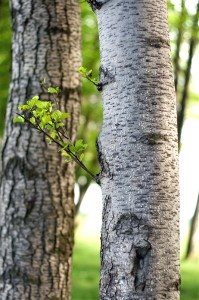Blog
Trees that have a structural defect likely to result in a failure are referred to as high risk if the tree is capable of striking a target. Targets can be buildings, vehicles or somewhere that people gather together. To make sure your backyard is a safe environment for all to enjoy, you need to be able to identify potentially hazardous defects in any of the trees on your property and take the necessary actions to correct them.
be buildings, vehicles or somewhere that people gather together. To make sure your backyard is a safe environment for all to enjoy, you need to be able to identify potentially hazardous defects in any of the trees on your property and take the necessary actions to correct them.
Remember, just because there is something that needs to be corrected with one of your trees, that doesn’t mean you should be the one to rush out there and try to do the job alone. Evaluating all of the trees in your area is something that is rather complex in nature. Only a trained professional should partake in this process and come up with a solution to your situation. Only do those things that you are comfortable with. Let the professionals come in and handle the rest for you.
Before doing anything around your property, you need to have a basic understanding of what you are looking for in the trees. It is also important that you understand how to size the forestry up in your backyard and make it a healthy and safe habitat for trees to grow and your family to relax. Areas where there is a lot of traffic should be inspected regularly to make sure there is nothing damaged that needs to be remedied.
Beyond just inspecting the trees on an annual basis, you also want to have them inspected after a major storm rolls through the area. Thanks to these inspections, you will know whether there is anything dangerous that needs to be addressed or not. If there is something that needs to be fixed, you will be able to do something about it before it poses a serious threat to your property and the personal safety of everyone on it.
The entire tree needs to be looked at for any damage. The roots, main stem, trunk flare, branches and all of the branch unions have to be thoroughly examined from all sides. Binoculars should be used to look at any branches that are higher up and out of view.
• Condition of the tree – Trees that are in poor condition might have dead branches, dead twigs, leaves that are off-color. When a tree is in good condition, they have vigorous branches, healthy leaves and full crowns. Remember, just because there are green leaves on the tree, that doesn’t mean it is safe.
• Species of tree – Certain types of trees are more susceptible to certain types of defects.
• Size and age of tree – Since trees are a living organism, they are prone to continual stress. Pay special attention to the older trees that could have accumulated with a number of defects and decay.
